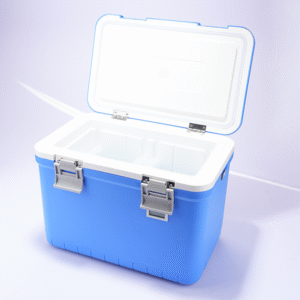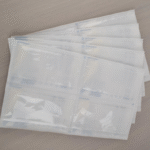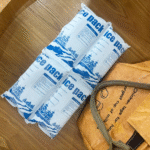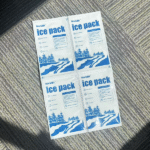How to Ensure Cold Chain Management for Vaccines?
The cold chain is the backbone of modern vaccination campaigns. Without strict temperature control, vacinas perdem potência, wasting billions of dollars and jeopardising public health. Especialistas estimam que up to half of all vaccine doses are wasted globally due to poor cold chain management. Ao mesmo tempo, mais do que 85 % of biologics and many new therapeutics require cold storage, and the market for healthcare cold chain logistics is projected to grow from around USD 59.97 bilhão em 2024 para mais de USD 137 bilhão por 2034. In this guide you’ll learn how to design and operate a reliable vaccine cold chain, meeting regulatory requirements, adopting the latest technologies and reducing environmental impact.
Importância: Why effective gestão da cadeia de frio matters for vaccines and biologics, including waste reduction and patient safety.
Condições: Required temperature and storage conditions for various vaccine types, including mRNA and traditional formulations.
Conformidade: What regulatory frameworks such as GDP, DSCSA and WHO guidelines require, and how to prepare for 2025 deadlines.
Inovação: How emerging technologies—IoT sensors, AI analytics, blockchain, smart packaging and drones—are transforming vaccine logistics.
Sustentabilidade: Strategies to reduce waste and emissions through reusable packaging, energy efficiency and greener transport.
Tendências: Key market and regulatory trends shaping vaccine cold chains in 2025 e além.
Why is effective cold chain management vital for vaccines?
Vaccines are highly temperature sensitive; even brief exposure to heat or freezing can destroy their potency. Estudos mostram que até 50 % of vaccines are lost globally due to temperature excursions, inadequate cold chain infrastructure and poor handling. This not only wastes scarce resources but also undermines immunisation programmes and public confidence. With the rise of biologics and gene therapies—more than 85 % of which require cold storage—the stakes are higher than ever. Effective cold chain management protects vaccine quality, reduces spoilage costs and ensures that every dose administered confers the expected immunity.
Maintaining the cold chain is complex. Vaccines must be transported from manufacturers to central warehouses, distribution hubs, regional clinics and ultimately to the patient. Most vaccines must be kept between +2 °C e +8 °C during storage and shipment, and ultra cold vaccines like Pfizer’s COVID 19 formulation require −80 °C to −60 °C. Any deviation can cause irreversible degradation. The complexity increases with cross border shipments, last mile delivery to remote locations, power outages and environmental extremes. Por isso, a robust cold chain integrates precise temperature control, validated packaging, trained personnel and real time monitoring.
What temperature and storage conditions do vaccines require?
Different vaccines have specific temperature ranges, and understanding them is the first step towards effective management. Traditional inactivated and attenuated vaccines such as measles, polio and Tdap are generally stable at +2 °C a +8 °C. Recombinant protein vaccines like hepatitis B can also be stored at this range. Vacinas de mRNA—including Pfizer BioNTech and Moderna—require much colder environments: Pfizer’s mRNA vaccine must be kept at −80 °C to −60 °C, enquanto Moderna’s at −25 °C to −15 °C, although buffered thawed doses may be kept at +2 °C a +8 °C for several weeks. Novo cell and gene therapies may demand storage at −80 °C a −150 °C, making cryogenic freezers and dry ice logistics essential.
High temperatures are not the only threat—freezing damages many vaccines. Por exemplo, tetanus toxoid and influenza vaccines lose potency if accidentally frozen. Humidity control also matters: moisture can affect packaging integrity and promote condensation when products move between environments. Os EUA. Centers for Disease Control and Prevention (CDC) and World Health Organization (QUEM) recommend continuous temperature monitoring with calibrated data loggers, strict adherence to validated ranges and regular staff training.
| Vaccine category | Recommended range | Implications for your operations |
| Traditional vaccines (measles, polio, Tdap, HPV) | +2 °C a +8 °C | Use pharmaceutical-grade refrigerators, evite congelar, monitor continuously |
| Vacinas de mRNA (Pfizer, Moderno) | −80 °C to −60 °C (Pfizer) and −25 °C to −15 °C (Moderno) | Require ultra cold freezers, dry ice or specialised thermal shippers; maintain logs for thawing |
| Viral vector vaccines (Johnson & Johnson, Ebola) | +2 °C a +8 °C | Similar to traditional vaccines but sensitive to freezing |
| Terapias celulares e genéticas | −80 °C a −150 °C | Use cryogenic freezers, liquid nitrogen or dry ice; strict hazard protocols |
| Combination vaccines or new biologics | +2 °C a +8 °C (unless otherwise specified) | Check manufacturer’s guidelines and update protocols |
Practical tips for vaccine storage and transport
Segment your products by temperature. Create a temperature map for all vaccines and biologics you handle. Don’t store mRNA vaccines alongside traditional ones without clear separation. For multi zone trailers, set distinct compartments for frozen, refrigerated and ambient items.
Pre condition packaging. Pre cool shippers and gel packs to the required temperature before loading. Use validated packaging solutions such as phase change materials and vacuum insulated panels to maintain temperatures for longer durations.
Monitore continuamente. Employ calibrated data loggers or internet connected sensors that record temperature every few minutes. Smart devices alert you instantly to deviations so that corrective action can be taken before spoilage occurs.
Treine sua equipe. Train warehouse staff, drivers and clinic personnel to handle vaccines gently, avoid unnecessary door openings and maintain packing integrity. Use written standard operating procedures and refresh training regularly.
Planeje contingências. Equip facilities with backup power sources (generators, battery systems) to prevent temperature excursions during outages. Pre define emergency response protocols and maintain a stock of additional packaging and refrigerants.
Caso do mundo real: An international clinical trial sponsor used smart labels and digital ledger technology to maintain cryogenic shipments of gene therapies. By continuously tracking temperature, location and chain of custody data, the sponsor prevented product spoilage and ensured data integrity. This digital approach also streamlined regulatory documentation, highlighting how technology can combine compliance and efficiency.
How do regulatory and safety requirements shape vaccine cold chains?
Vaccine cold chains are governed by a patchwork of international and national regulations designed to ensure product integrity and protect patients. Boas Práticas de Distribuição (PIB) guidelines outline minimum standards for medicine transportation and distribution, including continuous temperature and humidity monitoring, traceability and staff competence. The WHO’s Annex 5 provides global GDP standards, while the European Union has its own GDP guide; both emphasise proper equipment calibration, record keeping and quality systems.
Nos Estados Unidos, o Lei de Segurança da Cadeia de Abastecimento de Medicamentos (DSCSA) adds a layer of traceability. Por Poderia 27 2025 manufacturers and repackagers must serialize prescription drugs and provide electronic transaction records; wholesalers must comply by Agosto 27 2025 and large dispensers by novembro 27 2025. DSCSA requires each saleable unit to have a unique identifier and demands interoperable systems for tracing. Enquanto isso, healthcare cold chain providers must also comply with Good Manufacturing Practice (GMP), Análise de perigos e pontos críticos de controle (HACCP) e, for cross border shipments, national import/export regulations.
Key compliance actions for vaccine distributors
Establish a traceability plan. Map all supply chain steps and assign Critical Tracking Events e Key Data Elements to each. Under DSCSA and global GDP, records must be accessible within 24 horas and retained for at least two years.
Implement secure labelling. Use barcodes or 2D datamatrix codes on all primary and secondary packages. Intelligent labels with temperature indicators or RFID tags provide extra assurance and make scanning easier during audits.
Validate and maintain equipment. Regularly calibrate refrigerators, freezers, trucks and sensors. Document preventive maintenance and replace equipment before failure. Validate packaging solutions against worst case conditions (temperatura, vibração, umidade).
Train and audit. Provide regular GDP and GMP training for staff, and audit your partners for compliance. Include remote clinics and last mile carriers; training gaps are a common cause of temperature excursions.
Maintain documentation. Keep digital logs of all shipments, temperature records, deviations and corrective actions. Use automated systems to reduce manual error and facilitate quick regulatory reporting.
Exemplo prático: Many vaccine distributors still struggle with compliance. UM 2024 review found that around one third of fresh produce shipments were non compliant with traceability requirements—a cautionary reminder for vaccine logistics. Investing early in DSCSA ready systems helps avoid penalties and ensures patient safety.
What technologies and innovations are transforming vaccine storage and transport?
The challenges of vaccine cold chains are spurring rapid innovation. Monitoramento em tempo real, análise preditiva, embalagem inteligente e até drone delivery are reshaping how we store and transport vaccines, making operations safer and more efficient.
IoT sensors and continuous monitoring
Internet das coisas (IoT) devices are becoming ubiquitous in cold chains. Wireless sensors continuously measure temperature, umidade e localização, transmitting data to cloud dashboards and mobile apps. Real time alerts allow managers to intervene immediately when deviations occur. Modern sensors are small, affordable and often include GPS, cellular or Bluetooth connectivity. They reduce reliance on manual checks and are indispensable for meeting GDP and DSCSA traceability requirements. Some platforms integrate with smart speakers or messaging apps, making alerts accessible anywhere.
Inteligência artificial e análise preditiva
Machine learning algorithms analyse historical temperature profiles, transit routes and equipment performance to predict failures before they happen, allowing proactive maintenance and route optimisation. Por exemplo, a major cold storage provider used AI to optimise pre cooling cycles and prevent compressor failure, avoiding a costly product recall. AI also helps balance energy efficiency with product safety by adjusting refrigeration loads based on real time conditions.
Blockchain and digital twins
Blockchain provides a tamper proof ledger of all supply chain events. By logging temperature, location and custody data on a distributed ledger, vaccine providers can prove product integrity and combat counterfeit vaccines. Digital twin technology—virtual replicas of physical assets—allows managers to simulate scenarios, such as route delays or equipment failures, and plan contingencies without risk. Em 2025, some large pharmaceutical firms are exploring blockchain enabled digital twins for their entire vaccine portfolios.
Smart packaging and phase change materials
Packaging innovation is central to cold chain reliability. Materiais de mudança de fase (PCMs) maintain stable temperatures by absorbing or releasing heat at specific points. Combined with painéis isolados a vácuo (VIPs), PCMs extend thermal protection for longer shipments and reduce reliance on dry ice. Rótulos inteligentes with temperature indicators, time–temperature integrators or RFID chips signal if the cold chain has been breached. Enquanto isso, reutilizável, biodegradable and recyclable packaging is gaining traction, reducing waste and total cost of ownership. The global market for reusable pharmaceutical packaging is expected to grow from USD 4.97 bilhão em 2025 para USD 9.13 bilhão por 2034.
Last mile innovations: drones and micro hubs
Getting vaccines to remote or disaster affected areas remains a major challenge. Drone delivery has emerged as a promising solution: in Madagascar, drones delivering vaccines can carry up to 10 kg for journeys under 50 km, reaching communities in about half an hour. AS Fevereiro 2025, drones serve 12 districts across three regions, proving their viability for last mile logistics. Enquanto isso, micro hubs and insulated lockers are proliferating in urban areas, enabling temperature controlled pick up points that extend the final delivery window.
| Inovação | Descrição | Benefício prático |
| Sensores de IoT | Continuous monitoring of temperature, umidade e localização | Early detection of excursions, automated compliance records |
| AI predictive analytics | Algorithms predict equipment failure and optimise pre cooling and route planning | Previne a deterioração, reduces energy consumption |
| Blockchain & gêmeos digitais | Distributed ledger and virtual replicas to secure data and simulate scenarios | Melhora a rastreabilidade, prepares for contingencies |
| Embalagem inteligente (PCMs, VIPs, rótulos inteligentes) | Advanced materials maintain stable temperatures and signal breaches | Extends transit time, reduces dry ice usage |
| Drone delivery | Unmanned aerial vehicles deliver small batches to remote areas | Overcomes infrastructure gaps, speeds last mile delivery |
Practical tips for adopting these innovations
Start small and scale. Pilot IoT sensors and AI analytics on a subset of shipments to validate performance before full roll out.
Integre fluxos de dados. Combine sensor data with shipment planning software and inventory systems for a holistic view.
Choose verified suppliers. Use packaging and hardware that meet WHO’s Performance, Qualidade e Segurança (PQS) padrões. Check for regulatory certifications.
Educate stakeholders. Train staff and partners on reading smart labels, handling PCMs and using digital tools. Transparent communication builds trust across the supply chain.
Plan for battery life. Drones, sensors and smart labels require power; check battery life and re charging processes to avoid interruptions.
Estudo de caso: Durante a pandemia de COVID 19, a global logistics firm integrated IoT sensors and AI route optimisation to distribute vaccines across multiple continents. The system predicted potential delays, rerouted shipments proactively and reduced temperature excursions by 90 %. Implementation costs were offset by decreased spoilage and regulatory fines, demonstrating the ROI of digital transformation.
How can sustainability and environmental stewardship be integrated into vaccine cold chains?
Vaccination campaigns are not only measured by doses delivered but also by their environmental footprint. Traditional cold chains rely on energy intensive refrigeration and often generate mountains of single use packaging waste. Yet sustainable practices can reduce emissions, save money and enhance brand reputation.
Sustainable packaging and circularity
Mudando para reusable and recyclable containers reduz o desperdício e os custos a longo prazo. The majority of exported pharmaceuticals still use single use expanded polystyrene shippers; replacing them with corrugated or high density polyethylene crates can reduce greenhouse gas emissions by up to 20 %. Biodegradable insulation materials and compostable gel packs further reduce environmental impact. De acordo com pesquisas de mercado, the reusable pharmaceutical packaging sector is projected to nearly double by 2034.
Energy efficiency and alternative refrigeration
Cold storage facilities often operate at lower temperatures than necessary. A coalition of supply chain leaders found that increasing freezer set points from −18 °C to −15 °C could save 17.7 million tonnes of CO₂ and 25 terawatt hours of electricity annually, cutting supply chain costs by 12 %. Adopting high efficiency compressors, LED lighting and advanced insulation reduces energy consumption. Solar powered refrigeration units and portable freezers provide off grid solutions for remote clinics, improving resilience and sustainability.
Greener transport modes
Air freight is fast but carbon intensive. Shipping by sea or rail for non urgent vaccines can cut greenhouse gas emissions by up to 90 % and freight costs by 50 %, as demonstrated by UNICEF’s first vaccine shipment by sea in July 2025. Consolidating shipments, using returnable containers and optimising routes further reduces emissions.
Waste reduction and circular systems
Reducing vaccine spoilage is itself an environmental measure. As previously noted, half of vaccines may be wasted due to poor temperature control. By investing in training, monitoring and robust packaging, companies can significantly cut waste. Some organisations implement “reverse logistics” programmes to collect used packaging and thermal materials for refurbishment or recycling. Others provide refillable gel packs to clinics, reducing the need for single use ice.
| Sustainability strategy | Descrição | Benefícios para você |
| Embalagem reutilizável | Use durable containers and gel packs that can be sanitised and redeployed | Cuts waste, lowers long term cost, apoia a economia circular |
| Energy efficient warehouses | Atualizar isolamento, set appropriate temperatures, adopt high efficiency equipment | Saves energy, reduces carbon footprint |
| Alternative energy sources | Deploy solar powered units and hybrid systems | Provides independence in remote areas, reduces fuel use |
| Low carbon transport | Choose sea or rail over air when possible; plan routes to avoid delays | Lower emissions, reduced shipping cost |
| Waste audit and recycling | Track packaging waste and implement reverse logistics | Enhances sustainability credentials, reduces disposal fees |
Exemplo do mundo real: UNICEF’s shift to sea freight for vaccine shipments in July 2025 resulted in até 90 % lower greenhouse gas emissions and 50 % lower shipping costs compared with air transport. Enquanto isso, initiatives like the Move to –15 °C coalition have shown that small adjustments in freezer settings can save millions of tonnes of CO₂, underscoring the potential of incremental improvements.
2025 developments and trends in vaccine cold chain management
The vaccine cold chain landscape is evolving rapidly. Understanding market trends and emerging challenges helps you plan for the future.
Market growth and segmentation
O healthcare cold chain logistics market, which includes vaccine distribution, is expected to expand from USD 59.97 bilhão em 2024 para USD 137.13 bilhão por 2034, representando um CAGR of around 8.63 %. Dentro deste mercado, o vaccines segment is projected to register the fastest growth, driven by ongoing immunisation campaigns and the emergence of personalised therapeutics. Geographic analysis shows North America currently holds the largest share, enquanto Asia Pacific is the fastest growing region. O pharmaceutical temperature controlled packaging solutions market vai rise from USD 6.36 bilhão em 2025 para USD 11.5 bilhão por 2034, com o reusable segment commanding about 65 % compartilhar.
Parallel research on the vaccine storage and packaging market indicates a CAGR de 9.1 %, with values climbing from USD 4.78 bilhão em 2024 para USD 8.11 bilhão por 2030. Regionally, the United States accounted for USD 2.27 bilhão em 2024, Europe for USD 0.94 billion and Asia for USD 1.40 bilhão. These figures reflect growing investment in cold chain infrastructure, advanced packaging and digital technologies.
Evolução regulatória
O DSCSA deadlines em 2025 mark a pivotal moment for U.S. vaccine logistics. Beyond DSCSA, international regulators are aligning on digital traceability and sustainability. WHO and UNICEF emphasise sea freight and solar power, while regulators are adjusting guidelines to accommodate ultra cold therapies. As novel vaccines and personalised medicines proliferate, expect further regulations specifying temperature control, data integrity and supply chain security.
Technology convergence
Em 2025 we see IA, IoT, blockchain and digital twins converging to build “smart cold chains.” Many logistics providers integrate predictive analytics with continuous monitoring and secure ledger systems. Reusable and sustainable packaging is becoming the norm, thanks to cost reductions and circular economy initiatives. Drones e veículos autônomos are expanding beyond pilot projects, especially in regions with limited infrastructure or emergency contexts.
Consumer and supply chain pressures
Public expectations for vaccine safety, transparency and sustainability are rising. Social media awareness means that any breach of cold chain integrity can become a reputational crisis. Ao mesmo tempo, health organisations face pressure to deliver vaccines quickly and efficiently. Balancing cost, compliance and sustainability requires continuous innovation and collaboration across the supply chain.
Opportunities and challenges for your organisation
The growing market presents opportunities for expansion. Investing in multi temperature facilities, Sistemas de monitoramento inteligentes e embalagem sustentável can deliver competitive advantages and open new revenue streams. No entanto, challenges remain: high operational costs, complexity of regulatory compliance and the need for skilled personnel hamper growth. Por exemplo, refrigerated transport can cost about USD 2.50 per mile and accounts for em volta 30 % of total logistics expenses. By leveraging technology and adopting a proactive compliance strategy, you can mitigate these challenges.
Perguntas frequentes
- What are the recommended temperature ranges for vaccines?
Most vaccines should be stored between +2 °C e +8 °C. Vacinas de mRNArequire lower temperatures: Pfizer’s must be kept at −80 °C to −60 °C, while Moderna’s at −25 °C to −15 °C. Some cell and gene therapies need −80 °C a −150 °C. - How can I ensure compliance with DSCSA and GDP regulations?
Develop a traceability planwith defined Critical Tracking Events, label all packages with barcodes or RFID tags, use validated equipment and packaging, and maintain digital records accessible within 24 horas. Train staff regularly and audit your partners to verify compliance. - What technologies can prevent vaccine spoilage?
Utilise Sensores de IoTfor continuous temperature and location monitoring, implement AI analyticsto predict equipment failures and optimise routes, adopt embalagem inteligente with phase change materials and temperature indicators, and explore blockchain for tamper proof records. - What sustainable practices reduce costs and emissions in vaccine cold chains?
Switch to reusable and recyclable packaging, adjust freezer set points and upgrade insulation to save energy, usar solar powered or hybrid refrigeration, consolidate shipments and choose sea or rail transport where possible. - How should small clinics or pharmacies handle vaccine storage and transport?
Usar pharmaceutical grade refrigerators, calibrated data loggers and insulated transport carriers. Ensure the refrigerator is dedicated to vaccines only, with no food or other products. Mantenha registros de temperatura, train staff on handling and have a backup power plan. For transport, use validated portable coolers with gel packs conditioned to the right temperature and verify the package upon receipt.
Resumo e recomendações
Vaccine cold chain management is a complex but essential component of global health. By maintaining Controle preciso da temperatura, adhering to estruturas regulatórias such as GDP, DSCSA and WHO guidelines, and embracing inovações tecnológicas like IoT sensors, AI and smart packaging, you can ensure vaccine potency and protect public health. Sustainability considerations—such as reusable packaging, energy efficient operations and greener transport modes—are increasingly important and can reduce costs while lowering emissions. The market for vaccine logistics and packaging is expanding, offering opportunities for organisations that invest wisely and adopt proactive compliance strategies.
To succeed in this environment, start by mapping your product portfolio, validating your equipment and packaging, and training your staff. Integrar monitoramento em tempo real e análise preditiva to minimise excursions and increase efficiency. Explorar sustainable options and collaborate with partners to implement reverse logistics programmes. With thoughtful planning and a commitment to innovation, você pode construir um resiliente, compliant and sustainable vaccine cold chain.
Sobre Tempk
Tempk is a leading provider of temperature controlled packaging and logistics solutions. We specialise in end to end cold chain management for pharmaceuticals and biologics, offering validated shippers, IoT monitoring platforms and regulatory compliance support. Our engineers design packaging using phase change materials, vacuum insulated panels and smart labels to ensure product integrity. Estamos comprometidos com a sustentabilidade, using reusable materials and energy efficient designs. With decades of experience and a global network of partners, we help clients deliver life saving vaccines safely and efficiently.
Interested in optimising your vaccine cold chain? Entre em contato com nossos especialistas to discuss customised solutions that meet regulatory requirements and sustainability goals. Together we can ensure that every dose reaches those who need it.
























